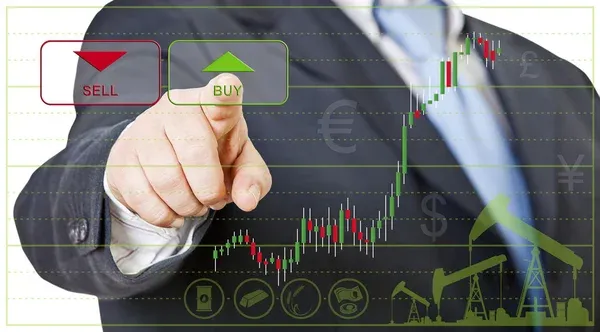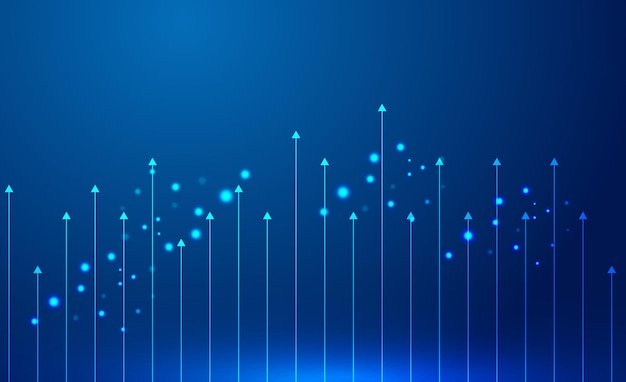The Forex market is the largest and most liquid financial market globally. Products include currencies, interest rates, stock indexes, and commodity futures. It has been estimated that there is over $5 trillion worth of currency exchange transactions daily, with Forex trades accounting for about 40 percent of this sum each day.

By any measure, the Forex market is enormous, and it can be an extremely lucrative place to trade if you know how to identify Supply and Demand in forex the market at any given time.

What is supply and demand in the forex market
Supply and demand are the fundamental concepts of economics. The price of an asset is determined by the forces of supply and demand, which can be summarized in a single sentence
Price increases when supply decreases or demand increases, and price decreases when supply increases or demand decreases.
If you understand this sentence, you know the entire concept of supply and demand.
Supply is determined by how much the market wants to sell at a given price. Demand is determined by how much the market wants to buy at a given price.
The price goes up when supply decreases or demand increases because there are more buyers than sellers (demand exceeds supply), so competition among buyers pushes the price up.
Similarly, the price goes down when supply increases or demand decreases because there are more sellers than buyers (supply exceeds demand), so competition among sellers pushes the price down.
From this, you can see that if both supply and demand increase, the price will go up because increased demand will be stronger than the effect of increased supply. Similarly, if both supply and demand decrease, the price will go down because the impact of decreased supply will be stronger than the effect of reduced demand.
So, How to Identify Supply And Demand in Forex?
It's an essential concept because it is what moves the market. You can see it on every chart, but most people do not understand how to identify or trade it.
How to Identify Supply and Demand Zones?
Demand zones are areas where buyers have stepped in and created a place of support. If you look at the chart below, you will see that the price has moved up and then retraced back down to a demand zone. This demand zone is created because the buyers have pushed the price back up and out of this area. I call it a demand zone and not just a support zone because there is more demand than supply in this area, which means that there are more buyers than sellers.
Supply zones are like demand zones but for sellers and resistance levels. In the chart below, you will see an example of a supply zone where sellers have stepped in to create an area of resistance. If you look at the chart below, you will see that the price has moved down and then retraced back up to a supply zone. This supply zone is created because sellers have pushed the price back down out of this area. I call it a supply zone and not just a resistance level because there is more supply.

What are the Different Structures of Supply and Demand Zones?
The price of an asset forms the different supply and demand zones structures that are either rejected from a level or accepted at a station. This can be seen by how price reacts as it reaches a certain point on the chart and shows us whether the price will continue to rise or fall.
The types of supply and demand structures are:
\\Recycled:\\ This is when the price has been rejected from a certain level (supply or demand) and comes back to test that same level.
\\Reverse:\\ This is when the price has been accepted at a certain level (supply or demand) and comes back to test that same level.
\\New -\\ This type of structure is formed when the price hasn't been to that area before, so there isn't any history, so it could attract some traders as they feel they can enter with less risk.
What are the Best Tips for Using Supply and Demand to Trade Forex?
- No demand zone is perfect, keep it simple, and the more perfect you make it, the more risk you take
- If there is no precise demand level and the price reverses off a random area that looks like a demand level but doesn't have any previous price action to back it up, then don't trade it!
- Don't give a demand or supply level too much room, if they are not pushed hard, they will fail
- The best levels are the ones that are just recently broken and have not been retested yet – these are the levels with the most potential
- You should always trade in favor of the current trend, if you see a potential setup, but the trend is down, don't trade it because it has a greater chance of failure! A trade-in favor of a trend also has price momentum on its side, which makes for better RR ratio trades.
- Always remember to wait for confirmation - never take a trade just because 'it looks like there could be an opportunity! This is called chasing businesses, and it will lose you money in the long run.

How to Find Supply and Demand Area on the Chart?
\\Step 1.\\ Look for the High and Low of the previous week.
\\Step 2.\\ Draw a line from high to low in the new week on Monday.
\\Step 3.\\ Find the price area where there is a rejection of price, and two candles are closed above the line, then draw a horizontal line.
\\Step 4.\\ Find the price area where there is a rejection of price, and two candles are closed below the line, then draw another horizontal line.
\\Step 5.\\ If there is no price action at the demand zone by Thursday, you can remove that zone because it is not valid anymore.
image source